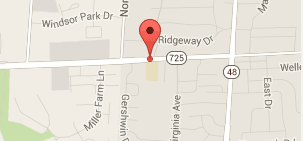Chapter 13 Bankruptcy Basics
With many Americans struggling with financial problems, bankruptcy is a possibility to shed troublesome debt and keep personal property. According to most bankruptcy experts, Chapter 13 bankruptcy is the best way to achieve this goal. A bankruptcy petition halts all collections efforts, including foreclosure proceedings, repossession actions and garnishments. This is through the automatic stay imposed by statute. While the stay is in effect, creditors may not initiate lawsuits or make phone calls in an attempt to collect a debt.Repayment Plans
Chapter 13 also allows debtors to retain significant property such as equity in a home, a car or other vehicle, as well as other investments. Debtors enter into repayment plans based on their disposable income. All debts are combined and restructured into one affordable monthly-payment made to the Trustee, who uses this money to repay creditors.
The Trustee will first pay back secured debts, such as car payments and back mortgage payments, followed by priority debts such as back income taxes and child support arrears. After secured and priority debts are paid, unsecured debts such as credit cards, medical debts and other interest-bearing accounts are paid with any remaining funds. Unsecured debts are commonly paid off at a fraction of their full value and interest on these accounts is not paid, which can save debtors thousands of dollars per year.
Court approved repayment plans last for a period of 36 to 60 months, after which certain debts will be discharged completely. Debtors may retain their personal property while catching up on past due debts.
Lien Stripping of Mortgages
Another benefit of Chapter 13 bankruptcy is the process of lien stripping. While bankruptcy judges cannot reduce mortgage debt or alter interest rates, they may allow unsecured mortgages to be discharged. The logic behind lien stripping is very straightforward. If a second mortgage is no longer secured by the value of the home, it can be discharged in bankruptcy.
Most second mortgages began as secured debt because it was based on the value of the home at the time it was executed. As the value of the security declines, the home no longer has the value to support the debt. For example, if a buyer purchased a home in 2005 for $150,000, it was likely secured by two mortgages: a first mortgage for $130,000 and a second for $20,000. If the home is now valued at $125,000, the second mortgage is now considered unsecured debt, which can be discharged in bankruptcy while the homeowner still retains the property.
As such, the bankruptcy court may strip the junior mortgage from the property; additionally, judgment liens may also be avoided. This can be a benefit to homeowners seeking bankruptcy protection. After the repayment plan is completed, some homeowners may actually emerge with equity in their home.
Homeowners can also avoid substantial tax liability by choosing bankruptcy even if their home was repossessed. According to a CNN/Money Magazine report, a tax liability can be triggered when a home goes through foreclosure and the lender forgives the portion of the mortgage balance above its market value. Essentially, the difference forgiven between what people borrow and what they repay is considered income.
Wage Earner Plan
The key aspect for Chapter 13 debtors is having continual income; hence the term “wage earner’s” bankruptcy. Debtors live on fixed budgets and often make payments through payroll deductions. This increases the likelihood that payments will be made on time and that debtors will complete the plan. If they do not follow the plan and fail to make payments, the court may dismiss the case or convert it Chapter 7 bankruptcy.
To be eligible for Chapter 13 bankruptcy, one must have less than $360,475 in unsecured debt and less than $1,081,400 in secured debt. Debtors must also complete a consumer credit counseling course prior to filing their bankruptcy petition, as well as a financial management course in order to receive a discharge.
Filing for bankruptcy may also provide debtors other benefits such as catching up on missed mortgage payments, called arrearages, over the life of the repayment plan or having the interest rate on their car payments reduced. To find out if these options are available to you, speak with an experienced bankruptcy attorney.
The preceding is not intended to be legal advice. Those considering bankruptcy should contact an experienced attorney.





